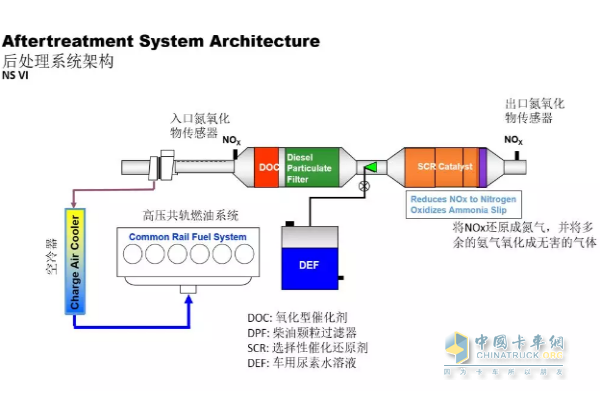Say energy conservation, I would have to mention Cummins. As a global leading power solution provider, Cummins can provide diversified power solutions and emission treatment solutions. Cummins' product layout has been very complete, with good compatibility and perfect technical reserves. It is not merely to satisfy the market demand. And in line with global emissions standards, but also to pursue the global ecological sustainability, to achieve the human to the United States as their mission, has always been the first to achieve its own emissions upgrade "pioneer."
Prior to the fall of the DPF policy, Cummins had already deployed DPF applications in the European and North American markets and had achieved great success with extensive application experience. In addition, Cummins has never stopped the research, development, and testing of SVI's products since the drafting of the National 6 emission regulations. Shenzhen recently took the lead in announcing the implementation of the National Sixth Standard. Cummins’ long-term technology accumulation and joint research and development of partners will help the OEM customers meet the standards and develop the Sixth National Market.
At present, Cummins has made a forward-looking layout for the Sixth National Products and Technology. The DPF policy is on the ground. Futian and Jianghuai companies that assemble Cummins engines are indifferent. Futian and JAC light trucks use the Cummins ISF engine. This engine adopts an advanced DOC+DPF+SCR integrated post-processing system to remove particulate matter. Effective treatment with nitrogen oxides to properly meet emission standards!
 Cummins ISF Engine
Cummins ISF Engine
So, what exactly is the DOC+DPF+SCR integrated post-processing system and how does it work?
The DOC+DPF+SCR integrated post-treatment system is mainly composed of three parts: DOC (diesel oxidation catalyst), DPF (diesel particle trap) and SCR (selective catalytic reduction device). DOC and DPF process HC (hydrocarbon), CO (carbon monoxide) and particulate matter in exhaust gas; SCR treats NOx (nitrogen oxides) in exhaust gas, and NOx reacts with ammonia produced by urea under the action of catalyst. Harmless N2 (nitrogen) and H2O (water).
 Post-processing system architecture
Post-processing system architecture
The DOC oxidizes incompletely burned hydrocarbons and carbon monoxide to water and CO2, and oxidizes part of the NO to NO2. When the exhaust gas passing through the DOC passes through the DPF, the particulate matter is trapped by the DPF. The trapped PM can be eliminated by DPF regeneration to avoid DPF blockage. The NOx control is achieved by EGR (Exhaust Gas Recirculation) and SCR (Selective Catalytic Reduction). Between the DPF and the SCR there is a urea solution injection device and a decomposition tube. After the urea solution is injected into the decomposition tube, it undergoes evaporation and pyrolysis to generate ammonia gas under the effect of the exhaust temperature. Under the action of the SCR catalyst, NOx is reduced to nitrogen gas and water. The AMOX (Ammonia Trap) section behind the SCR can capture ammonia gas that has not completely reacted and oxidize it to nitrogen and water to control ammonia leakage.
Readings:HONGQI INSTRUMENT (CHANGXING) CO.,LTD , https://www.hongqi-instrument.com
![<?echo $_SERVER['SERVER_NAME'];?>](/template/twentyseventeen/skin/images/header.jpg)